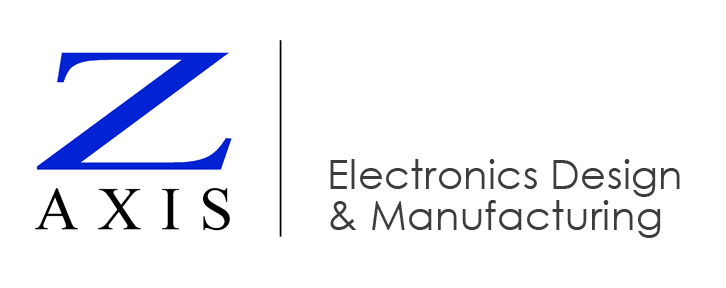Through hole assembly isn’t dead. It’s alive and well at Z-AXIS.
Printed circuit board assemblies, or PCBAs, use parts that are surface mounted or have through-hole leads. Boards that have parts with both methods of attachment are called mixed PCBAs.
Surface mount technology, or SMT, attaches parts directly to the surface of the board. SMT lines are fast and automated, and a single machine can place many different types of parts, such as resistors and integrated circuits.
Through-Hole Assembly
Through hole components have leads that are inserted through holes in the board. Some parts have radial leads that extend from the bottom of the part. Sometimes, these parts are shaped like a can.
Through-hole assembly is slower than SMT, but it has its advantages. For parts that are physically large or subject to significant vibrations, through-hole attachment can support stronger, more reliable connections.
Through-hole components are also essential for Z-AXIS’ power supply business, which requires larger components to meet significant power requirements.
Mixed PCBAs
Other electronic manufacturers are so focused on SMT that they no longer support through-hole boards or mixed PCBAs, but we’ve made significant investments in through-hole assembly.
For example, we use our radial inserter for through-hole components that come on tape and reel. This machine trims radial leads to size, inserts each part in the right location, and clinches the leads for mechanical strength.
We also prepare some through-hole components by cutting and forming their leads. Typically, these parts are too large for our radial insertion machine or don’t come on tape or reel.
Workers along the stuff line insert these parts manually. Video monitors show them where to place each component.
Wave Soldering and Selective Soldering
Finally, boards that contain through-hole components are sent through wave soldering or selective soldering to form the mechanical and electrical connections.
